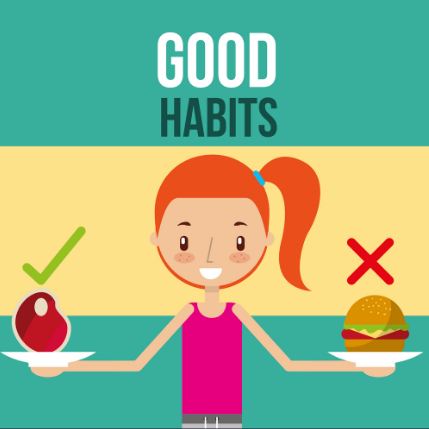
A healthy diet should include fruits and veggies. The majority of fruit and vegetable are good sources for protein, vitamin A, vitamin D, and B12 as well as iron. Some eggs are even fortified with omega-3 fatty acids, which help improve brain development in kids. A cup of fruit is about 12 calories. Most fruits are cut in small pieces. For a snack, you can either serve fresh or dried fruits with peanut butter.
Juice should only be consumed in moderation. Limit your intake to one or two drinks per day if you wish to control your child's sugar intake. Rather than sprinkling juice on your child's plate, serve a bowl of actual fruit. It will add fiber and other beneficial nutrients to their diet. Drinking too much juice between meals can lead to health problems. The body needs sodium to maintain fluid levels and nerve function. However, too much sodium can increase the risk of high blood pressure and heart attack. Most processed foods contain high levels sodium.

A new study has shown that 60 percent are unfit for children. A survey of 156 products revealed that more than half had added sugar, 15.4% contained saturated fat, and seven percent contained salt. The researchers also studied how companies label healthier foods and what they contain. These foods were often highly processed and the ingredients weren't listed. These foods also often lack essential vitamins and mineral that children need in order to grow up healthy.
Sugary and processed foods pose health risks to children's health. To avoid this problem, parents should focus on overall diet and provide whole foods. Stay away from processed foods, and instead focus on healthy food. Instead, encourage your children to eat high-quality foods rich in vitamins. It will help them develop positive eating habits in their future. There are many options to encourage your child eat more fruits, vegetables, and other healthy foods. By setting a good example, you can encourage your child to eat healthy foods.
It is important that children eat a variety of fruits and vegetables. They should also be limited in their intake of juice. Each meal should contain at minimum one serving of each. The recommended fruit and vegetable consumption for children ranges from one cup a day for a toddler to three cups a day for a 14-year-old boy. Flaxseed, omega-3 fatty fatty fish, and omega-3 are excellent sources of fats. Some fruits and vegetables are high in antioxidants and fiber.

Milk is a great source of vitamin D and calcium, which helps to build strong bones. It also contains around 8 grams of proteins. The minimum age for children to be allowed to consume dairy products is two years. Children should not consume more that eight ounces daily of cow's milk. When they turn 18, it is okay to switch to low-fat milk. Even though cheese and yogurt may not be healthy, they are great sources for calcium and vitamin D.
FAQ
What can I do to lower my blood pressure?
You must first determine the cause of high blood pressure. Next, you will need to determine what is causing high blood pressure. This could be as simple as eating less salt, losing weight, taking medications, etc.
You also need to make sure you are getting enough exercise. You can also walk if you don’t have the time.
A gym membership is a good idea if you don't like how much exercise your doing. You will likely want to join an exercise group that shares your goals. It's easier for you to exercise if you know that someone will be watching you at the club.
Do I need to count calories
You might wonder, "What's the best diet for me?" or "is counting calories necessary?" It depends on many factors such as your current health, personal goals, preferences, and overall lifestyle.
The Best Diet - Which One Is Right To You?
My current health status, personal goals, preferences, and overall lifestyle all play a role in choosing the right diet. There are many diets out there, some good and some bad. Some work well for certain people while others don't. So what should I do? How can I make the best decision?
These questions are addressed in this article. It begins with an overview of the different diets today. Next, we'll discuss the pros and cons for each type of diet. Finally, we'll look into how to choose the best one for you.
Let's first take a look at different diets.
Diet Types
There are three main types. Low fat, high proteins, and ketogenic. Let's briefly discuss them below.
Low Fat Diets
A low-fat diet reduces the amount of fats you eat. This is done by reducing your intake of saturated oils (butter, cream cheeses, etc.). They are replaced by unsaturated fats such as avocados, olive oil, and cream cheese. Low fat diets are often recommended to those who wish to lose weight quickly. However, this kind of diet may cause problems such as constipation, heartburn, and indigestion. In addition, it may lead to vitamin deficiencies if a person doesn't get enough vitamins from their food.
High Protein Diets
High protein diets are known to restrict carbohydrate intake and promote the consumption of proteins. These diets have higher protein levels than other diets. These diets are designed to build muscle mass and help you burn more calories. The downside is that they may not provide adequate nutrition for someone who needs to eat regularly. They can also be very restrictive so they may not be suitable for everyone.
Ketogenic Diets
Ketogenic diets also go by the name keto diets. They are high on fat but low in carbs and proteins. These are often used by bodybuilders and athletes because they allow them the ability to train harder and for longer periods of time without feeling tired. They do require strict compliance to avoid any side effects like fatigue, headaches, nausea, and headaches.
How can I get enough vitamins?
Your diet can provide most of your daily requirements. Supplements are available if you are deficient. You can take a multivitamin supplement that contains all the vitamins you need. You can also buy individual vitamins at your local pharmacy.
Talk to your doctor if you have concerns about your nutritional intake. You can find vitamins K and E in dark green leafy vegetable such as spinach, kale and turnip leaves, as well a variety of sweet potatoes and sweet potatoes.
Ask your doctor if there is any doubt about how much vitamin you should be taking. He or she will recommend the appropriate dosage based on your medical history and current health status.
Exercise: Good or bad for immunity?
Exercise is good for your immune system. When you exercise, your body produces white blood cells which fight off infections. You also get rid of toxins from your body. Exercise is a great way to prevent heart disease, cancer, and other diseases. Exercise also helps to reduce stress levels.
However, exercising too much can weaken your immune system. When you exercise too hard, your muscles will become sore. This can cause inflammation as well as swelling. The body then needs to make more antibodies to fight infection. These extra antibodies can lead to allergies or autoimmune disorders.
So, don't overdo it!
Statistics
- According to the Physical Activity Guidelines for Americans, we should strive for at least 150 minutes of moderate intensity activity each week (54Trusted Source Smoking, harmful use of drugs, and alcohol abuse can all seriously negatively affect your health. (healthline.com)
- nutrients.[17]X Research sourceWhole grains to try include: 100% whole wheat pasta and bread, brown rice, whole grain oats, farro, millet, quinoa, and barley. (wikihow.com)
- The Dietary Guidelines for Americans recommend keeping added sugar intake below 10% of your daily calorie intake, while the World Health Organization recommends slashing added sugars to 5% or less of your daily calories for optimal health (59Trusted (healthline.com)
- Extra virgin olive oil may benefit heart health, as people who consume it have a lower risk for dying from heart attacks and strokes according to some evidence (57Trusted Source (healthline.com)
External Links
How To
27 Steps for a healthy lifestyle even if your family buys junk food
The best way to eat healthily is to cook at your home. It can be difficult to cook healthy meals at home. This article will help you make healthier choices while dining out.
-
Find restaurants that offer healthy options.
-
Order salads and vegetables before ordering any meat dishes.
-
Ask for sauces with no added sugar.
-
Avoid fried foods.
-
Grilled meats are better than fried.
-
Do not order dessert unless you really need it.
-
Make sure that you have something else to eat after dinner.
-
You should eat slowly and chew well.
-
When you eat, drink plenty of fluids.
-
Do not skip breakfast, lunch or dinner.
-
Include fruit and vegetables with every meal.
-
Use milk, not soda.
-
Sugary drinks should be avoided.
-
Limit salt in your diet
-
Try to limit the number of times you go to fast food restaurants.
-
If you can't resist temptation, ask someone to join you.
-
Don't let your children watch too much TV.
-
Keep the television off during meals.
-
Do not consume energy drinks.
-
Take regular breaks from work.
-
Get up early and go for a run.
-
Do some exercise every day.
-
Start small, and work your way up.
-
Set realistic goals.
-
Be patient.
-
Exercise even if it's not your favorite thing to do.
-
Positive thinking is key.